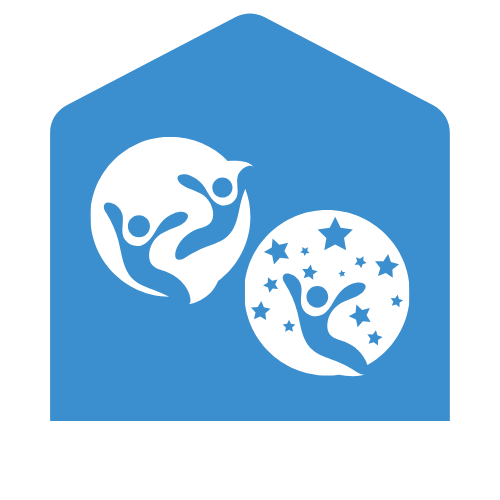Table of Contents
ToggleIn a world where chatbots once resembled awkward teenagers fumbling through their first conversations, ChatGPT has swooped in like a seasoned conversationalist. Gone are the days of robotic responses and frustrating misunderstandings. Instead, this advanced AI marvel engages users with a wit and charm that even your most talkative friend would envy.
Overview of Chatbots
Chatbots serve as computer programs designed to simulate conversations with users. Early chatbots primarily relied on predefined scripts. These systems often provided basic responses, limiting interactions to simple queries. As technology advanced, so did chatbot capabilities. Rule-based systems emerged next; they followed set patterns to offer somewhat more complex interactions.
Natural language processing changed the landscape significantly. This technology enabled chatbots to understand context and intent, improving user engagement. Users started experiencing more fluid conversations compared to earlier models. Despite these advancements, some chatbots still struggled with nuanced language and real-world context.
Artificial intelligence introduced a new wave of innovation in chatbot development. AI-driven systems, like ChatGPT, set themselves apart through deep learning techniques. These models continually learn from vast datasets, allowing them to generate relevant and context-aware responses. Compared to traditional chatbots, AI systems exhibit a higher degree of adaptability and understanding.
Many users appreciate the conversational tone and relevance provided by AI chatbots. Unlike their predecessors, advanced systems create more meaningful interactions. This evolution not only enhances user satisfaction but also expands potential applications across industries. Chatbots are now utilized in customer service, healthcare, and even entertainment, reflecting their versatility.
The shift from basic scripts to sophisticated AI-driven models represents a significant milestone. Heavier reliance on contextual understanding and user engagement shapes how chatbots function today. Improved algorithms and training methods continue to redefine user experiences, establishing a new standard in the chatbot landscape.
Evolution of Chatbot Technology

Chatbots have undergone significant transformation over the decades. Developing from simple programs to sophisticated AI systems, this evolution reflects changes in technology and user expectations.
Early Chatbots
Early chatbots like ELIZA and ALICE operated primarily on predefined scripts. These basic programs provided scripted responses, limiting the depth of conversations. Users often encountered rigid interactions, with little room for variation. ELIZA, for instance, mimicked a psychotherapist through keyword matching, lacking genuine comprehension of user inquiries. This approach led to monotony in conversations and did not bear much resemblance to human dialogue.
Limitations of Previous Models
Previous chatbot models faced several limitations that affected user satisfaction. Basic scripted responses often produced frustration when confronted with ambiguous queries. Rule-based systems allowed for slightly more complex interactions but still lacked adaptability. Many chatbots failed to handle nuanced language, causing misunderstandings. Additionally, their inability to learn from past interactions restricted overall improvement. Users expressed dissatisfaction due to inflexibility, prompting the need for more advanced solutions that could better understand context and intent.
Introduction to ChatGPT
ChatGPT represents a significant step forward in the chatbot evolution. Enhanced user experience shifts from rigid interactions to fluid conversations.
Key Features of ChatGPT
Advanced capabilities define ChatGPT’s effectiveness. It understands context, offering nuanced responses tailored to user queries. This allows for natural dialogue, as users experience fewer frustrations typical in earlier models. Versatile applications enhance interactions in customer service, education, and entertainment. Users engage with ChatGPT seamlessly, benefiting from its rich, context-aware exchanges. Its training on vast datasets also contributes to its ability to recognize a wide range of topics, fostering meaningful discussions.
Advancements in Natural Language Processing
Improvements in natural language processing propel ChatGPT to new heights. Earlier chatbots struggled with understanding intent, but AI technologies have evolved. ChatGPT leverages deep learning to comprehend subtleties in conversation, making user interactions more relatable. Contextual awareness enriches dialogue, engaging users in a way that feels natural. Enhanced algorithms refine responses based on prior interactions, creating a cycle of continuous improvement. These advancements make ChatGPT more adaptable to changing user needs, establishing a new standard for conversational AI.
Comparing ChatGPT with Earlier Chatbots
ChatGPT revolutionizes interactive communication, differentiating itself from earlier chatbots through advanced language understanding and adaptability.
Understanding User Context
Earlier chatbots often struggled with grasping user intent, leading to frustrating experiences. ChatGPT excels in recognizing the context behind queries, making interactions more relevant. By utilizing deep learning, it analyzes conversational history and picks up nuanced cues. This capability enables users to express complex thoughts without the fear of being misunderstood. Contextual awareness allows ChatGPT to generate appropriate and tailored responses. Enhanced understanding transforms user inquiries into meaningful dialogues rather than simplistic exchanges, improving overall engagement.
Conversational Flow and Engagement
Maintaining a natural conversational flow represents a significant shift from earlier chatbot models. Traditional bots relied on scripted responses, creating rigid interactions that felt artificial. In contrast, ChatGPT employs sophisticated algorithms to facilitate seamless exchanges, fostering a more dynamic conversation. It not only answers questions but also prompts follow-up inquiries, promoting deeper engagement. Users enjoy the warmth and relatability of interactions, which encourages them to explore topics further. Enhanced conversational flow makes using ChatGPT a more enjoyable experience, significantly improving user satisfaction compared to its predecessors.
Use Cases of ChatGPT
ChatGPT spans various applications, demonstrating its versatility in addressing different user needs. Customer support benefits immensely from its capabilities. It provides instantaneous, relevant responses, resolving inquiries without long wait times.
Healthcare organizations utilize ChatGPT for patient engagement. Automated symptom checkers and personalized health advice enhance user experience. This integration streamlines communication, offering timely support to patients.
Education sectors leverage ChatGPT for tutoring and learning assistance. Students receive explanations on complex topics, enhancing comprehension. Interactive learning environments foster timely feedback and personalized learning paths.
Content creation thrives with ChatGPT’s assistance. Writers leverage it for brainstorming ideas, drafting articles, or even generating creative content. This tool acts as a bridge between inspiration and output, maintaining flow and coherence in writing.
E-commerce platforms harness its potential for product recommendations. By understanding user preferences, ChatGPT boosts sales conversions. Personalized shopping experiences emerge, catering to individual tastes.
Entertainment ventures incorporate ChatGPT for interactive storytelling. Users can engage with narratives that adapt based on their choices. This innovation keeps audiences captivated, offering unique experiences each time.
Integration with smart devices showcases ChatGPT’s adaptability. Voice assistants powered by its technology facilitate everyday tasks, such as setting reminders or controlling home devices. These interactions simplify routines, enhancing overall user convenience.
Various sectors discover new opportunities to implement ChatGPT. Its advanced language understanding and flexibility continue to elevate user experiences, setting a new benchmark for what conversational AI can achieve.
Future of Chatbot Technology
Advancements in chatbot technology continue to shape user experiences. AI-driven platforms focus on enhancing conversational abilities and user engagement. Expectations rise as consumers demand more intuitive interactions.
Interoperability between various systems allows chatbots to integrate seamlessly into diverse platforms. Businesses increasingly adopt chatbots to streamline operations and improve customer satisfaction. Enhanced machine learning algorithms lead to more personalized user responses, fostering deeper connections with users.
Development trends now highlight an emphasis on emotional intelligence. Chatbots evolve to recognize and respond to user emotions, making interactions feel more human. Privacy and security features also gain importance, ensuring user data protection remains a top priority.
Specific industries will benefit tremendously from continued chatbot innovations. In e-commerce, chatbots enable personalized shopping experiences through informed product suggestions. Within healthcare, automated systems facilitate quick communication for patient inquiries and services, enhancing overall care efficiency.
Customer service improves as bots efficiently resolve queries without long wait times. The future may also incorporate voice-activated assistants that enhance accessibility and convenience. These evolving technologies embody a shift toward creating engaging, user-centered experiences in conversational AI.
Sustained growth in chatbot capability indicates significant potential for future applications. Continuous learning models adapt over time, ensuring relevance in conversations. Investment in advanced natural language processing techniques continues to revolutionize how users interact with technology, redefining possibilities for chatbot applications globally.
ChatGPT represents a significant leap forward in chatbot technology. Its ability to engage users in natural and meaningful conversations sets it apart from earlier models. By understanding context and adapting to user inputs, ChatGPT fosters a more satisfying interaction experience.
As businesses and industries adopt this advanced technology, the potential applications continue to expand. The focus on emotional intelligence and personalized responses enhances user connections, making interactions feel more human-like.
Looking ahead, the evolution of chatbots like ChatGPT promises to redefine communication, ensuring that users receive relevant and engaging experiences tailored to their needs. This ongoing transformation in conversational AI is paving the way for a future where chatbots play an integral role in daily life.







